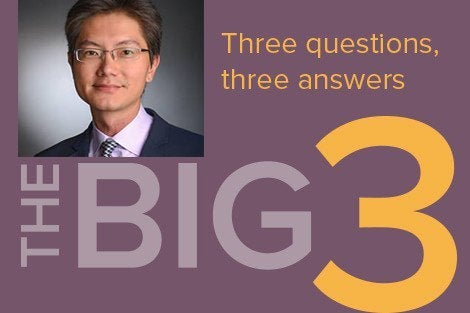August 16, 2019 –Use of e-cigarettes and other vaping products including Juul is soaring, especially among youths. Between 2017 and 2018, the prevalence of current e-cigarette use among U.S. high school students increased from 12% to 21%. Andy Tan, assistant professor of social and behavioral sciences, recently co-authored a Lancet article examining how Juul is funding scientific research—and why this is problematic.
In what ways do Juul’s research efforts mirror previous industry-sponsored research by the tobacco industry and why is this concerning?
Juul’s sponsored research efforts are strikingly similar to past efforts funded by tobacco companies. Altria, Philip Morris’ parent company, invested $12.8 billion to acquire a minority stake of Juul in 2018. Soon after, Juul launched JLI Science, which appears to employ similar strategies used by Philip Morris and other tobacco companies. JLI Science supports internal research and contracts with private research organizations based in the US, UK, and New Zealand. Often the studies report findings that appear favorable to the company. For instance, Kevin Burns, CEO of Juul Labs, was quoted in a press release of a recent peer-reviewed article that reported a decline in cigarette consumption among adult smokers who purchased Juul devices. Juul’s sponsored research is particularly concerning because the tobacco industry’s sponsored research had a long-lasting negative impact on public health.
How do companies use industry-funded research to drive their agenda?
Industry-funded research can shape entire fields of study, divert attention away from research that shows the harms of tobacco products, influence legislators and policy, and undermine actions intended to protect the public’s health. We’ve already seen this play out with the tobacco industry, which for decades steered the research agenda on cigarette smoking so that it was favorable to the industry’s legal and policy positions.
For instance, the tobacco industry sought to undermine epidemiological evidence that cigarette smoking caused cancer by supporting research to advance the hypothesis that genetic factors were associated with smoking addiction. Through the Tobacco Institute (1958-1998) and the Center for Indoor Air Research (1988-1998), Philip Morris and other companies funded research internally and among consultants to cast doubt on evidence demonstrating the hazards of cigarette smoking and secondhand smoke. Another strategy involved funding research among investigators from the private sector who would publish research that supported the tobacco industry’s position. The industry co-opted scientists and lawmakers through industry-sponsored conferences and committees to disseminate the industry’s research agenda and to provide the scientific legitimacy to sponsored research.
Is there a place for Juul Labs’ money in research? If so, what steps could the company immediately take to establish credibility in its research-funding efforts?
There are alternate models to channel industry funds that would increase transparency and provide greater independence to scientists. Research led by Johns Hopkins University has described possible funding models for tobacco research that involves industry money. One such model would involve a legislative initiative to impose a tax or licensing fee—in this case the tax would be on Juul products—and earmark a portion of the funds for research on the public health impact of vaping products. Another model is a court-ordered initiative to legally mandate contributions from the industry to fund research. A third possible model would involve a company like Juul voluntarily contributing funds to a third-party organization that is governed independently from the company’s influence. Examples of legislative and court-ordered initiatives at the state and federal levels in the context of industry-funded tobacco control research would serve as precedents for implementing similar initiatives for Juul-funded vaping research.
